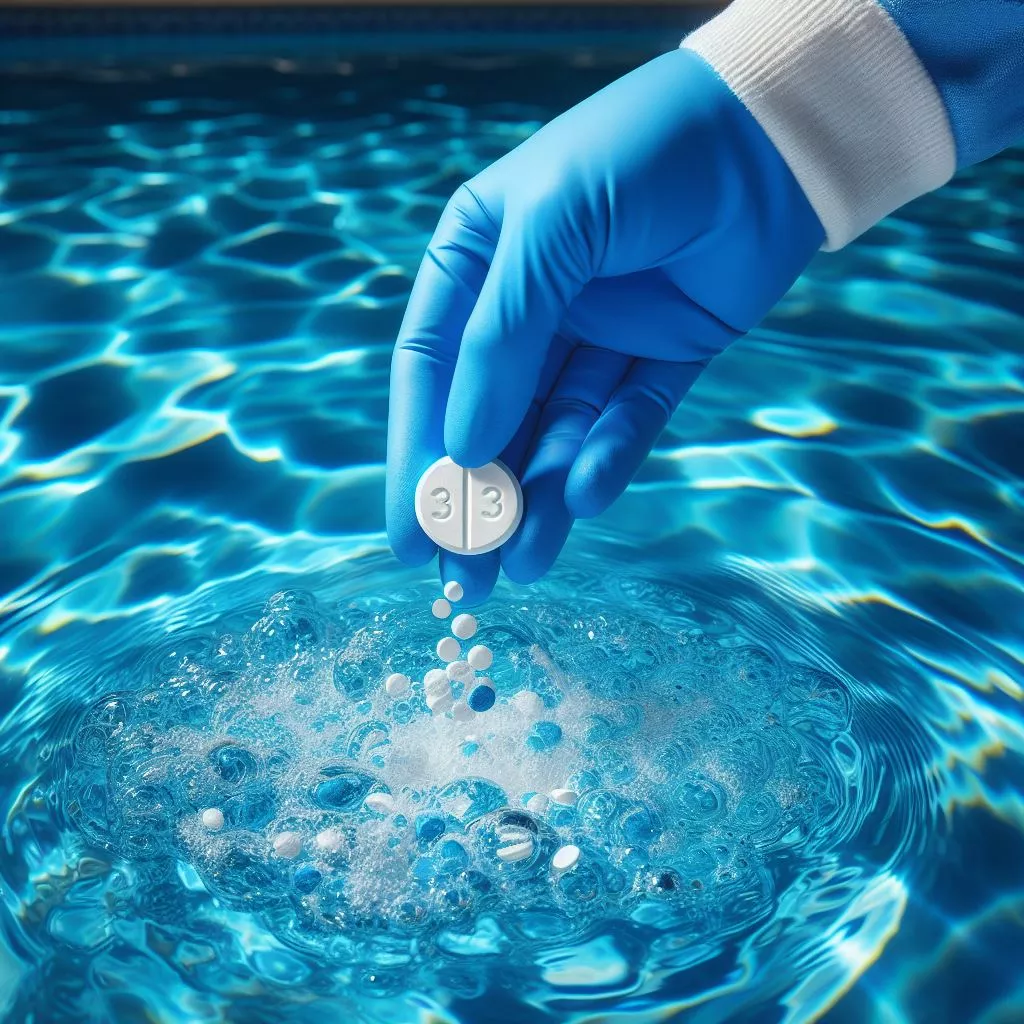As the summer heat beckons and the idea of a refreshing dip in your own backyard oasis becomes increasingly alluring, maintaining a clean and safe swimming environment becomes paramount. When it comes to sanitizing your pool, two popular methods stand out: pool chlorine tablets and ultraviolet (UV) disinfection. Each approach has its unique advantages and considerations, making the choice between them a matter of personal preference, pool usage, and maintenance routines. Let’s dive deep into the pros and cons of both systems to help you decide which one is the perfect fit for your pool.

I. Efficacy in Killing Microorganisms
1. Pool Chlorine Tablets:
Chlorine is a time-tested sanitizer known for its effectiveness in eliminating bacteria, viruses, and algae. When dissolved in water, it forms hypochlorous acid, a powerful oxidant that attacks and destroys harmful microorganisms. Regular dosing with chlorine tablets ensures continuous disinfection, making it a reliable choice for busy pools with frequent use.
2. UV Disinfection:
UV light targets the DNA of microorganisms, preventing them from reproducing and ultimately eliminating them from the water. This technology is highly effective against pathogens like bacteria and viruses, though it doesn’t provide residual sanitization like chlorine. UV works best as a supplementary system, often paired with chlorine or ozone for comprehensive pool hygiene.
3. Transition:
While both methods excel at eliminating harmful microorganisms, their modes of action differ, with chlorine offering continuous protection and UV focusing on instant disinfection.
II. Ease of Use and Maintenance
1. Pool Chlorine Tablets:
Chlorine tablets offer convenience and simplicity. They can be easily added to the pool’s skimmer or a floating dispenser, automating the chlorination process. However, maintaining the right chlorine level requires regular testing and potential adjustments, especially during periods of heavy use or weather changes.
2. UV Disinfection:
UV systems are relatively low-maintenance once installed. They require periodic cleaning of the quartz sleeves to ensure maximum UV transmission and occasional bulb replacement. The lack of chemicals to handle and monitor makes UV an attractive option for those seeking a hassle-free sanitization solution.
3. Transition:
Ease of use varies depending on personal preferences. Chlorine tablets offer a straightforward approach, while UV systems promise a more hands-off experience.

III. Environmental Impact
1. Pool Chlorine Tablets:
Chlorine, when used in moderation and properly managed, poses minimal risk to the environment. However, over-chlorination can lead to the formation of chloramines, which can irritate swimmers’ eyes and skin, and contribute to the smell commonly associated with indoor pools. Additionally, the disposal of used chlorine tablets should be handled responsibly to avoid harming aquatic life.
2. UV Disinfection:
UV systems operate without the use of harmful chemicals, making them an environmentally friendly choice. They don’t contribute to water pollution or create byproducts that can affect swimmer comfort. UV disinfection also reduces the need for chlorine, further minimizing its environmental footprint.
3. Transition:
For those concerned about their carbon footprint and the well-being of aquatic ecosystems, UV disinfection presents a compelling alternative to traditional chemical-based sanitation methods.
IV. Cost Considerations
1. Pool Chlorine Tablets:
Chlorine tablets are generally more affordable upfront and have a low ongoing cost, as they are widely available and consumed in relatively small quantities. However, the need for regular testing kits, pH balancers, and potentially additional chemicals to manage chloramines can add to the overall expense.
2. UV Disinfection:
UV systems require a significant initial investment but can save money in the long run by reducing the reliance on chemicals. Maintenance costs, including bulb replacements and cleaning supplies, should be factored into the equation. Nevertheless, for those seeking a low-chemical, high-efficiency solution, UV disinfection may prove cost-effective over time.
3. Transition:
The cost-benefit analysis leans towards either option depending on individual priorities and long-term planning.
V. Suitability for Different Pool Types and Uses
1. Pool Chlorine Tablets:
Chlorine is versatile and suitable for a wide range of pool types, from residential backyard pools to commercial facilities. Its effectiveness in controlling algae and maintaining water clarity makes it a popular choice for pools exposed to heavy use or located in warm, humid climates.
2. UV Disinfection:
UV systems are particularly well-suited for indoor pools or those with advanced filtration systems. They excel at eliminating pathogens that may slip through conventional filters, enhancing overall water quality. UV is also ideal for those seeking a chemical-free approach or who have sensitive skin and respiratory systems.
Conclusion:
Choosing between pool chlorine tablets and UV disinfection ultimately boils down to personal preferences, pool usage patterns, and long-term goals. Chlorine tablets offer a cost-effective, time-tested solution for maintaining water hygiene, while UV disinfection provides a low-chemical, environmentally friendly alternative. Both methods have their merits, and the right choice depends on balancing factors such as ease of use, environmental impact, cost considerations, and the specific needs of your pool.
Ultimately, the key to a clean and safe swimming environment lies in selecting the sanitation method that best aligns with your lifestyle, budget, and commitment to sustainability. With either option, regular maintenance and monitoring are essential to ensure optimal water quality and a refreshing swim every time.

 Instant
Quote
Instant
Quote Email
Us
Email
Us